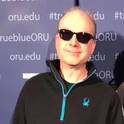
Contribution to Book
Beautifying Data in the Real World
Beautiful Data
(2009)
Abstract
There are at least two problems with collecting "Beautiful Data" in the real world and presenting it to the interested public. The first is that the universe is inherently noisy. In most cases collecting the same piece of data twice will not give the same answer. This is because the collection process can never be made completely error-free. Fluctuations of temperature, pressure, humidity, power sources, water or reagent quality, precision of weighing, or human error will all conspire to obscure the “correct” answer. The art in experimental measurement lies in designing the data collection process so as to minimize the degree to which random variation and operator error confuse the results. In the best cases this involves a careful process of refining the design of the experiment, monitoring size and source of errors. In the worst case it leads to people repeating experiments until they get the answer they are expecting.
Keywords
- information literacy,
- science communication,
- open science
Disciplines
Publication Date
July, 2009
Editor
Julie Steele, Toby Segaran and Jeff Hammerbacker
Publisher
O'Reilly Media
ISBN
978-0-596-15711-1
DOI
http://precedings.nature.com/documents/4918/version/1
Citation Information
Andrew Lang, Jean-Claude Bradley, Rajarshi Guha, Pierre Lindenbaum, et al.. "Beautifying Data in the Real World" 1Beautiful Data (2009) p. 259 - 279 Available at: http://works.bepress.com/andrew-sid-lang/12/
Creative Commons License

This work is licensed under a Creative Commons CC_BY-SA International License.
